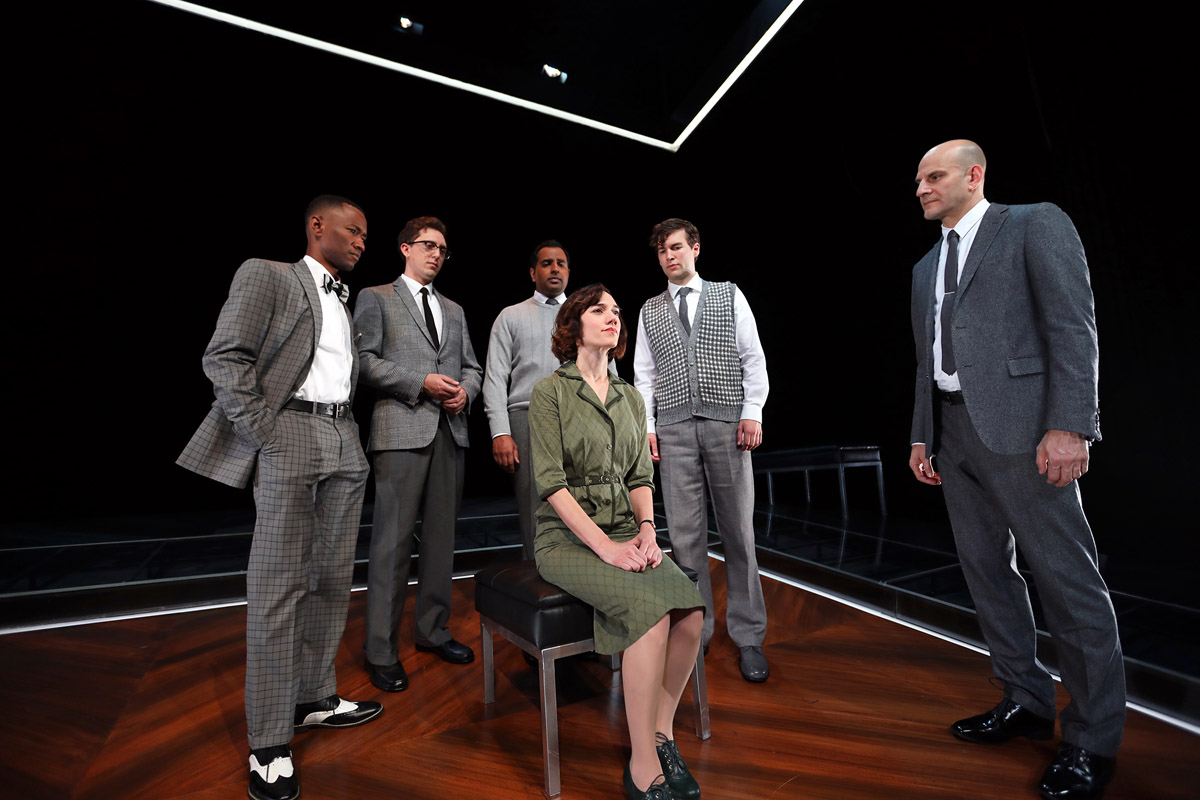
Behind every man’s great scientific discovery, there’s a woman who got dicked. No, not that way. And maybe not every discovery. But it happened in one of the 20th century’s most significant scientific finds, the double-helix structure of the DNA molecule. It made James Watson and Francis Crick household names for the Jeopardy set, but the pivotal contributions of fellow scientist Rosalind Franklin were exiled to historical footnotes, at best.
That’s one of the takeaways from Anna Ziegler’s 2008 play, Photograph 51, receiving a smart, well-tailored production at South Coast Repertory. Ziegler is too talented a playwright to reduce the fascinating backstory behind the search for DNA’s shape into solely men-vs.-women terms. Franklin’s perfectionism, methodical approach and difficulty in working with others is clear. But so is the relegation of a brilliant, educated woman to the back burner in 1950s academia and science. Forget about not getting her name on the eventual Nobel Prize; she couldn’t even enter the men’s-only dining room at the English university where she worked.
The gender gap is most evident, however, in the way Franklin is talked about by the play’s other characters, all men (Anil Margsahayam’s Crick; George Ketsios’ Wilkins, her problematic partner; Riley Neldam and Josh Odsess-Rubin as doctoral students; and Giovanni Adams’ Watson; Adams happens to be black, which may be colorblind casting, but could also be a not-so-subtle jab at the still-living Watson’s comments on race and intelligence). Franklin seems, at least within Kimberly Senior’s directorial vision and Helen Sadler’s riveting portrayal, a fully formed, self-reliant woman about 20 years before her time, one whose passion is her work; she has no time, patience or interest in being the “kind” of woman men expect. But they can’t stop talking about her appearance, seemingly cold exterior and stubbornness. While Franklin isn’t concerned with defining herself as anything but a scientist, the men constantly try to define her as a woman.
That may be historically accurate, even in a play the writer admits is based on real people and events but is a work of fiction. But the men feel underwritten compared to Franklin (even though the acting is first-rate, particularly Ketsios’ aching Wilkins). And at times, that works against the play’s most compelling aspect: the frantic race between rival scientific teams to be the first to uncover the secret of DNA. It’s not clear just why that’s so important, but that’s okay; the stakes are so heightened in the dialogue and action that we just get it. That is one of the main strengths of Ziegler’s play; it’s one of those rare pieces about science and scientists that doesn’t try to make the brainy stuff easily digestible. It engages with the science on its own terms, allowing those already familiar the opportunity to judge whether it’s “scientific” enough, but leaving the rest of us free to focus on the story’s urgency.

And that story, while smart and entertaining, comes with a heaping side of heartbreak and loss. It’s not just the sad fact that Franklin’s invaluable contributions to unraveling the mystery of DNA’s structure went largely unnoticed, but that while these brilliant scientists are locked in a fierce, if collegial, battle to discover the shape of the very essence of life in hopes of further understanding it, they all struggle to understand one another. They are on the verge of a monumental breakthrough that will help the world know how humans work on the cellular level, but they haven’t a clue as to how humans work on the human level.
That’s what saves Ziegler’s play from being completely hamstrung by the men’s incessant musings about Franklin’s gender and sexuality. Sure, it gets repetitive, but it also underscores an important line delivered in the opening moments: how with their high-tech instruments, scientists could now see everything, right down to the cellular level—everything, that is, except sometimes what was right in front of them.
There is another line toward the end of the play, however, that most captures Ziegler’s non-empirical concerns: not the organized science of how humans work, but the messy, disorderly ways we don’t. A character remarks that Watson and Crick drew a conclusion about the DNA molecule based on Franklin’s images (including the titular one) that she was a bit slow to pick up on: that it consisted of two strands running in opposite directions, a pair of endless spirals that work together, but never meet.
That may be the most scientific explanation of one of humanity’s most philosophical dilemmas, one that flows through Photograph 51: loneliness. Even though we need other people to love and feel and be with, ultimately, we all check out alone.
And the day science figures a way out of that one, maybe even the anti-vaxxers and climate-change deniers will applaud.
Photograph 51 at South Coast Repertory, 655 Town Center Dr., Costa Mesa, (714) 708-5555; www.scr.org. Thurs.-Fri., March 21-22, 7:45 p.m.; Sat., 2 & 7:45 p.m.; Sun., 2 p.m. $23-$86.
Joel Beers has written about theater and other stuff for this infernal rag since its very first issue in, when was that again???


Just read this…wished I could’ve been there, the play that is!